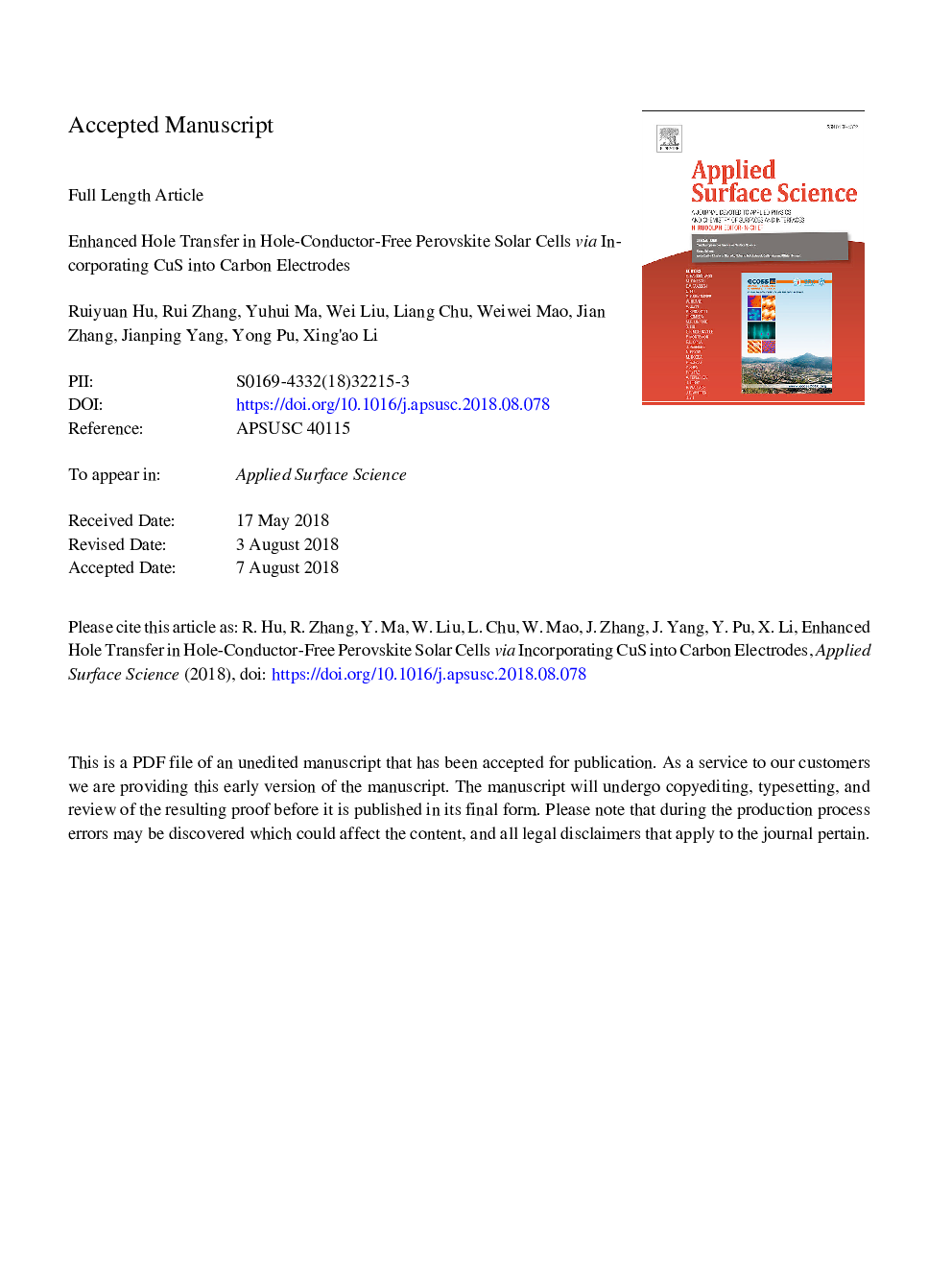| Article ID | Journal | Published Year | Pages | File Type |
|---|---|---|---|---|
| 11006498 | Applied Surface Science | 2018 | 21 Pages |
Abstract
Hole conductor-free perovskite solar cells (PSCs) based on carbon electrodes have drawn much attention on account of low cost, long-term stability, simple manufacture technology. In the devices, the carbon electrodes not only play as charge transfer channels, but also as hole extracting layers, thus the conductivity and hole mobility are critical for the performance. However, the hole mobility of carbon layers is relatively low. Here, low-temperature carbon layers were incorporated with CuS nanostructures, in which the hole mobility was improved. After adding 1â¯wt.% CuS, the PSCs yielded to the best power conversion efficiency of 11.28% with a VOC of 0.98â¯V and JSC of 18.26â¯mAâ¯cmâ2, while the pure carbon electrode based PSCs attained the best power conversion efficiency of 9.36% with a VOC of 0.93â¯V and JSC of 16.14â¯mAâ¯cmâ2 which is slightly higher than that of the PSCs based on pure carbon counter electrode. This study demonstrates that it is an effective way to improve the hole transport property of carbon counter electrode by combining p-type CuS with high hole mobility.
Related Topics
Physical Sciences and Engineering
Chemistry
Physical and Theoretical Chemistry
Authors
Ruiyuan Hu, Rui Zhang, Yuhui Ma, Wei Liu, Liang Chu, Weiwei Mao, Jian Zhang, Jianping Yang, Yong Pu, Xing'ao Li,
